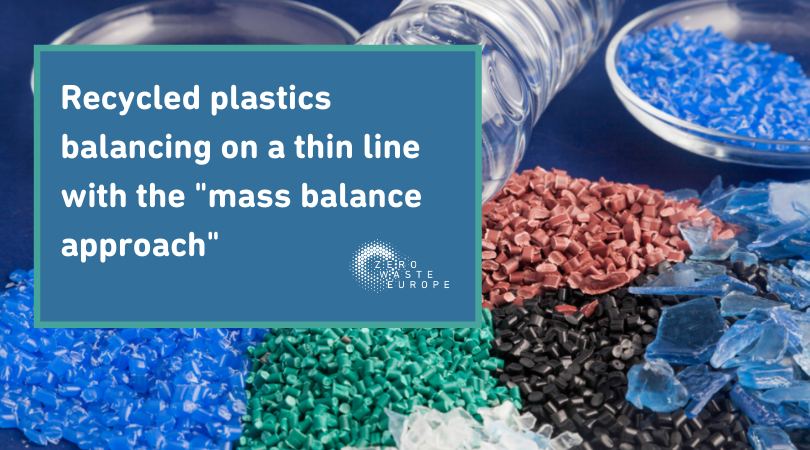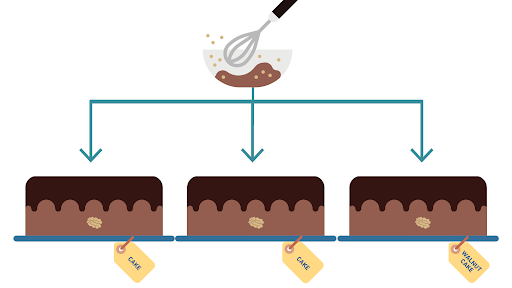Recycled plastics balancing on a thin line with the ‘mass balance approach’

The European Commission is currently developing options for methods to calculate, verify and report recycled content in plastic products. This is a step towards implementing the goals of the Single-Use Plastics (SUP) Directive to ensure at least 25% recycled plastic in PET bottles from 2025, and 30% in all beverage bottles from 2030. Once developed, the method will have further implications for other types of materials and products, such as for other packaging materials, construction materials, batteries, and vehicles.
Recycled content in plastics can be determined by ensuring traceability of the recycled material as it moves through the supply chain. Driven by the interest in including pyrolysis, gasification, and other technologies with questionable environmental impacts in the recycled content targets, the chemical industry is calling for a method of determining recycled content in plastic which is not based on traceability. Rather, they are calling for a loose and flexible method which would allow them to market plastic products as recycled regardless of their true content, via the so called mass balance method.
Mass balance is a set of rules for determining the use of recycled content in a final product such as plastic packaging when both recycled and virgin feedstock have been used in the process. Simply put, the main principle is that the total inputs should be balanced with the outputs.
However, there are several ways in which mass balance can be applied; some more transparent than others. An approach following Zero Waste Europe and ECOS ten recommendations would ensure chemical and physical traceability and achieve the goals of the SUP Directive.
On the other hand, a flexible mass balance method would undermine recycled content goals and result in:
- Brands could market their products as “recycled” even if they contain very little or zero recycled material (see “cake” example below).
- Trading of recycled content via a form of credit scheme, whereby recycled feedstock is converted to a theoretical currency and traded between regions without chemical and physical traceability.
- Recycled content could be converted into a theoretical currency whereby recycled plastic such as recycled PET could be traded “virtually” and sold as another plastic type such as nylon, irrespective of the different market values.
- Incentives to design plastic packaging and products for recyclability are undermined as companies can forego the need to increase recycled content rates through creative accounting.
- With a flexible mass balance approach, plastic products could be marketed as “recycled” despite containing very little or zero recycled content. Similar to selling a cake with only one walnut in it as a “walnut cake”.
 Want to know more about the state of chemical recycling in Europe?
Want to know more about the state of chemical recycling in Europe?
- Read the Executive Summary of CHEM Trust and Eunomia’s report “State of Play: Chemical Recycling” or the full report.
- Explore our ten concerns with existing chemical recycling life cycle assessments.
- Discover our joint statement with the Rethink Plastic alliance, and notably, ECOS, EEB and HCWH outlines key steps for effective legislation of chemical recycling in the EU.
- Dig into the topic with our study: El Dorado of Chemical Recycling, State of play and policy challenges.
- Read Zoe Casey blog on why chemical recycling won’t solve the plastic crisis.